This Space Available
By Emily Carney
The 50th anniversary of Skylab’s launch is upon us and will be marked by several anniversary events, including this one at Kansas’ Cosmosphere Thursday, May 18. Many of us are familiar with the stories of Skylab’s three crews and the myths/legends surrounding them. But many “unsung heroes” of the program were elemental to its success and didn’t quite receive the attention they deserved in 1973 and 1974.
While it would be impossible for a blog post to list the thousands of personnel – NASA and contractors – who contributed to Skylab, here are five people who helped to change Skylab’s image from a possible giant space blunder to a majestic space station capable of thousands of experiment hours that captured humanity’s imagination for decades.
Jack Kinzler: A NASA engineer known at Johnson Space Center as “Mr. Fix It,” Kinzler was essential in bringing Skylab back from the dead after launch injuries threatened to end its mission prematurely. One of the many problems Skylab initially faced included the loss of its micrometeoroid shield, which aided in keeping the space station’s interiors cool. After it was ripped off the station’s structure shortly after its May 14, 1973 launch, temperatures inside the station soared to around 120 degrees Fahrenheit, threatening experiments and other materials onboard. Kinzler worked quickly and devised a creative fix within less than ten days. This replacement sunshield could easily be put into place through a scientific airlock, negating the need for a hasty, risky outside EVA that could have proved problematic.
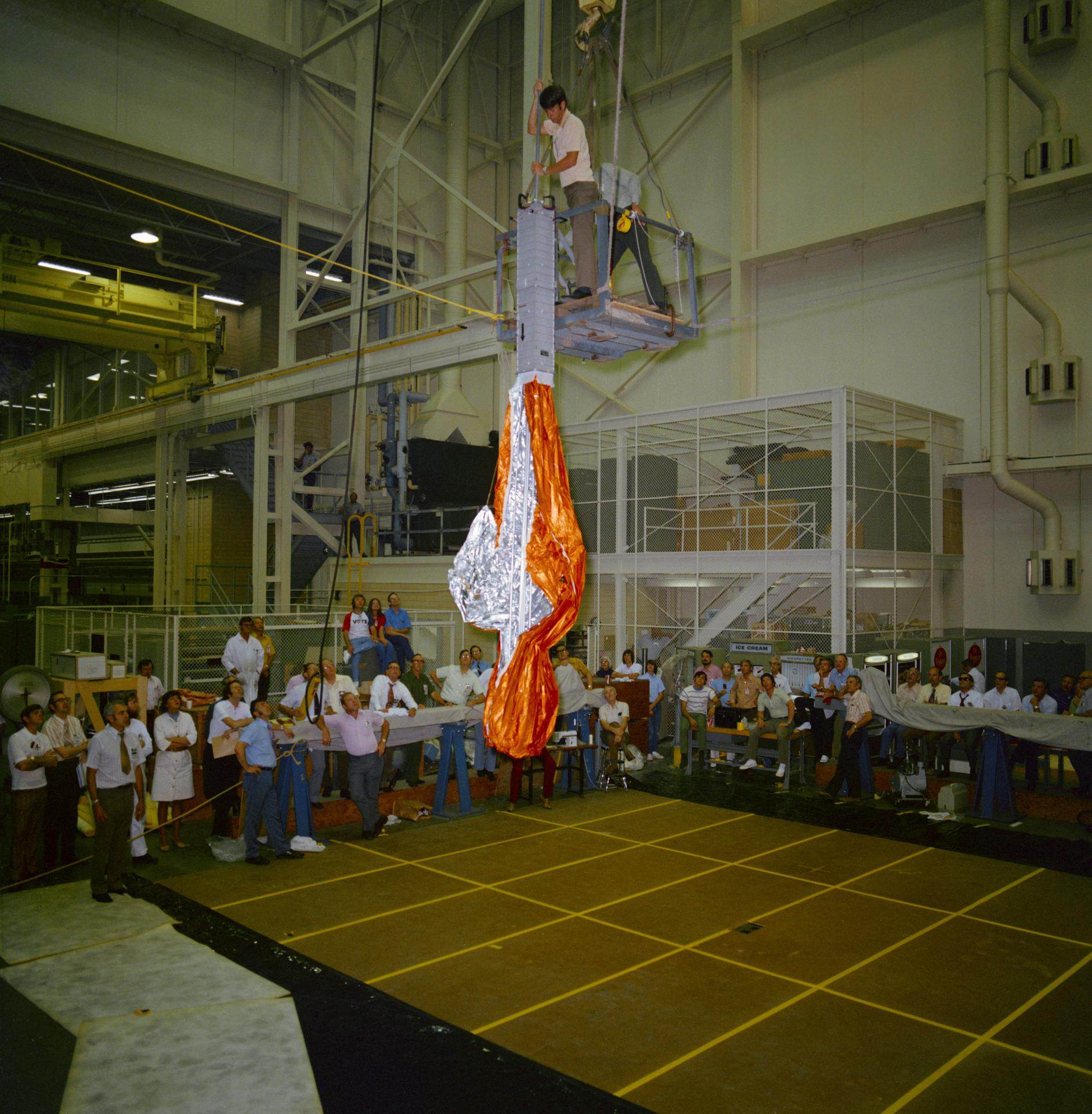
A NASA article explained how Kinzler came up with the idea of the replacement sunshield:
Kinzler quickly sent technicians on three errands: driving to a Houston sporting-goods store to buy four telescoping fishing poles; acquiring a 24-foot square of parachute silk; and ordering an 8-inch diameter tube from the metal shop. Kinzler built his prototype – a parasol that could be pushed through the camera port and unfurled by activating springs and telescoping tubes – and demonstrated it to higher-ups on the floor of a space center hangar. “It laid right out on the floor,” Kinzler said. “Talk about impressive. They said, ‘That’s it!’”
Kinzler took pride in implementing this innovative fix: “We stayed awake and worked for six solid days, around the clock. We had a hundred employees working on this thing, and we did everything. We made all the parts. We demonstrated how it’s to be done. And we completely pulled that thing off without any outside help.” Check out this NASA link for more information about Jack Kinzler and his sun shield solution.
Aylene Baker: Once designed, the new sunshield needed to be well-constructed – and that’s where Aylene Baker, contractor for General Electric, came in. According to a BBC article, Baker was brought in to sew the Mylar replacement sunshield shortly after it was devised; her quick, accurate work ensured it was ready within the ten days between Skylab’s launch and the launch of its first crew on May 25, 1973.
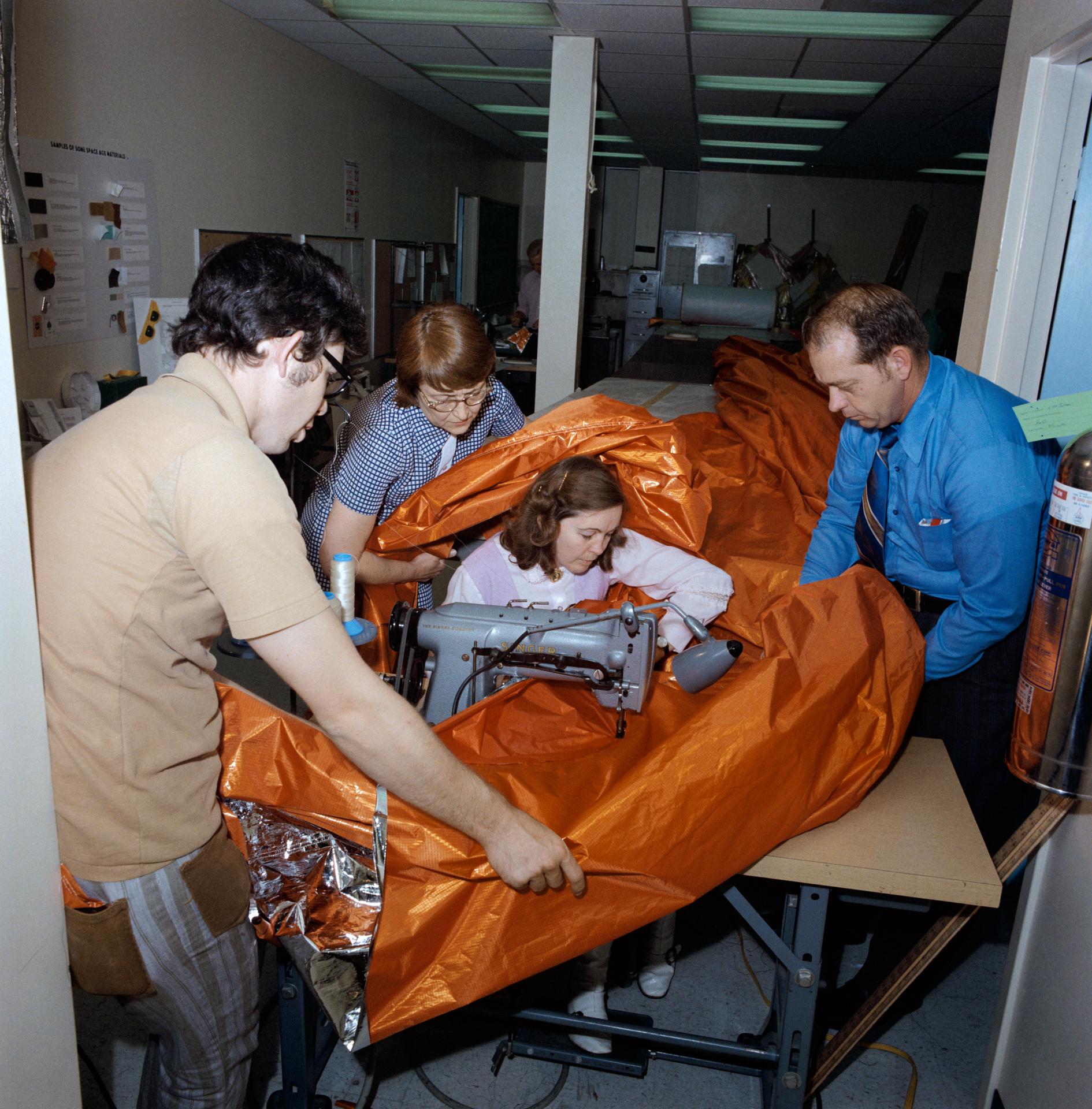
Aylene’s son, Herb Baker (who, like his mother, is a Johnson Space Center veteran), stated of his mother’s accomplishment: “It was a 22ft by 24ft piece of material. It was very thin layers of aluminum and used Mylar, laminated nylon, and another thin layer of nylon. One side was bright orange, the other silver. They called it a parasol, as it was like an umbrella. It folded up and deployed through a scientific airlock.” Kinzler’s – and Aylene Baker’s – ingenious fix worked beautifully. In August 1973, the second crew’s Dr. Owen Garriott and Jack Lousma installed the “twin-pole sunshade” that would reinforce the previous sunshade. These fixes made the space station habitable for the rest of the crewed program, which ended in February 1974 with the departure of the third crew.
Rusty Schweickart: A Group Three astronaut who’d flown in space as Apollo 9’s lunar module pilot and one of the first astronauts with an extensive scientific background, Skylab 2’s backup commander also was indispensable in Skylab’s transformation from a national laughing stock to a formidable space science platform. Russell “Rusty” Schweickart drew upon his previous Apollo 9 EVA experience and training shortly after discovering that Skylab had sustained near-fatal injuries on its way to Earth orbit. Schweickart spent countless hours performing research and development EVAs in Huntsville, Alabama’s Marshall Space Flight Center water tank alongside other astronauts, such as Skylab 4’s science pilot Dr. Ed Gibson, in a quest to figure out how best to un-jam Skylab’s stuck SAS-1 solar wing.
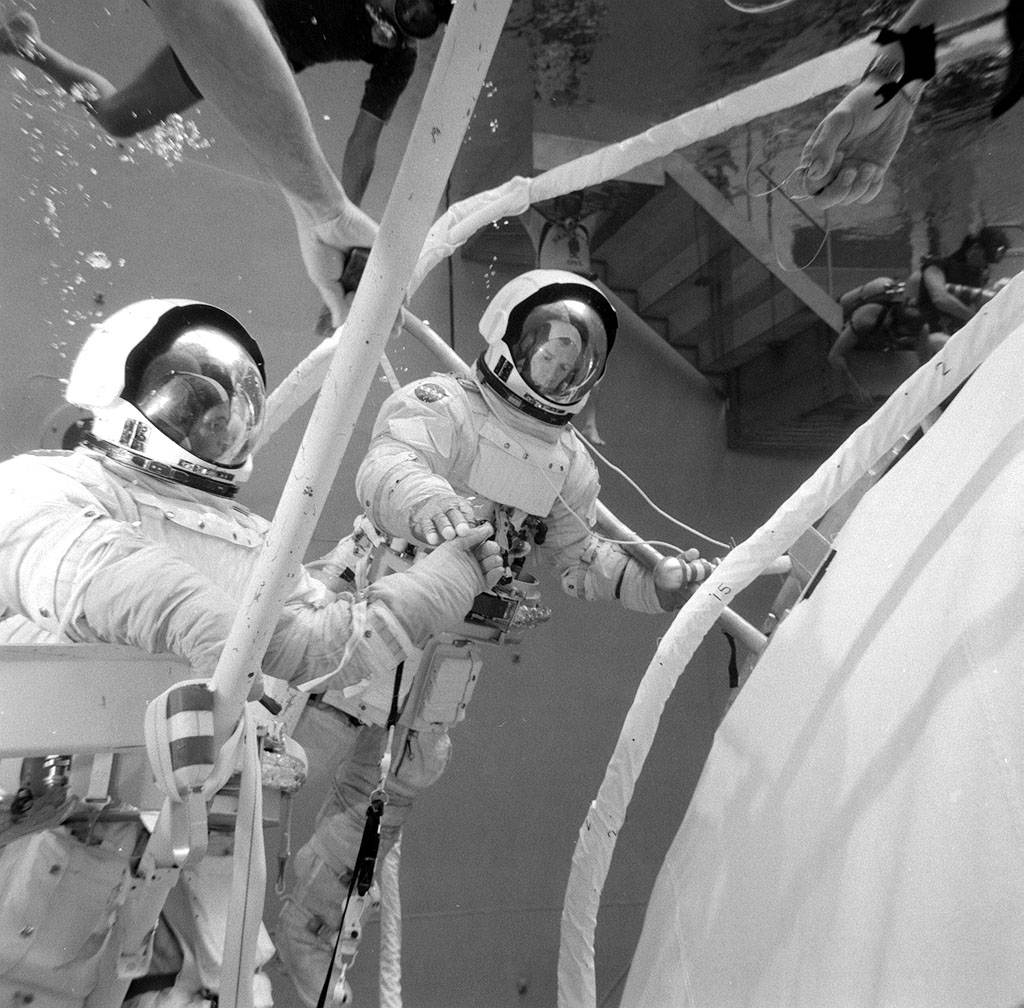
A previous article written by this author stated, “Utilizing tools procured from A.B. Chance, a company that made lineman-grade tools such as wire cutters, Schweickart and other astronauts (including [Dr. Ed] Gibson and future ‘Buck Rogers’ Bruce McCandless II) spent ample time devising contingency procedures and performing practice EVAs in Marshall Space Flight Center’s water tank located in Huntsville, Alabama. While a standup EVA performed by Skylab 2’s pilot Paul Weitz did not free up the stuck solar panel, a 3+ hour EVA performed by mission commander Charles ‘Pete’ Conrad and science pilot Dr. Joseph Kerwin on June 7th ultimately did the trick – thanks to Schweickart’s research and development in the tank.”
A restored 1973 film by Retro Space HD shows Schweickart in full Skylab rescue mode (also rocking spectacular 1970s fashions). Schweickart also discussed his efforts during a recent Space and Things podcast episode.
Dr. William Thornton: While he wouldn’t fly in space until the Space Shuttle program was underway during the 1980s, “Excess Eleven” astronaut-scientist Dr. William Thornton’s work during SMEAT (the Skylab Medical Experiment Altitude Test) and the Skylab program was more than essential. Thornton devised many of the biomedical experiments and equipment aboard Skylab, including a “weight” (mass) measuring device and a treadmill snarkily nicknamed “Thornton’s Revenge.”
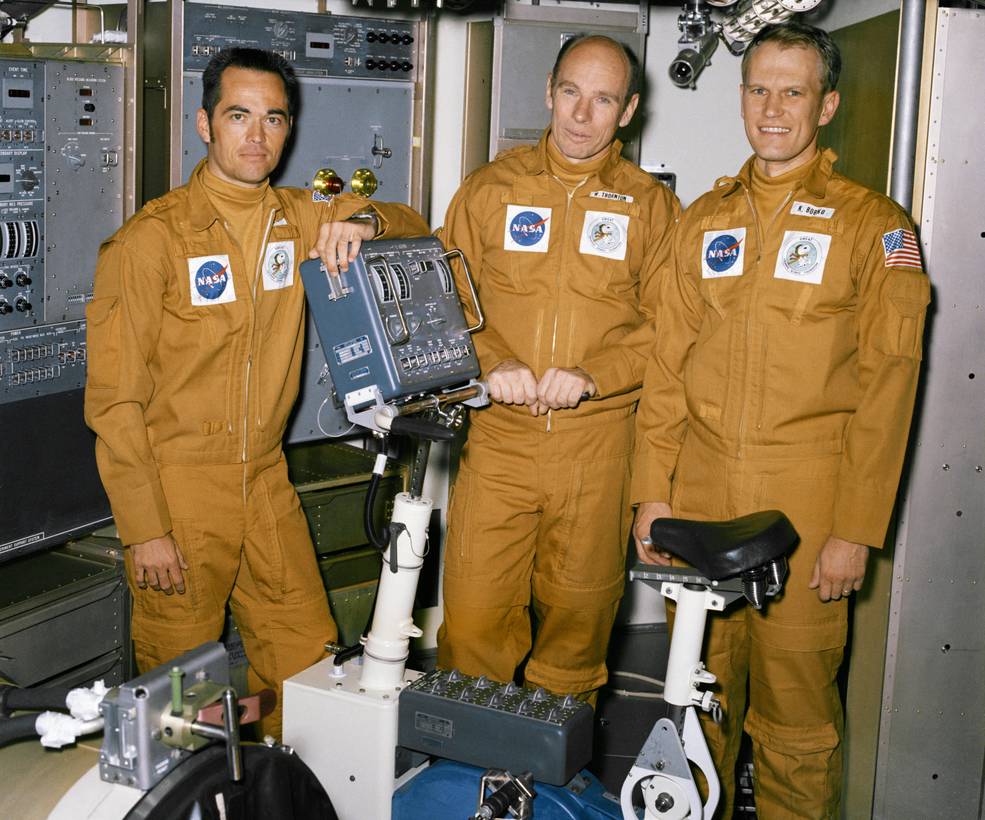
Thornton also discovered that a single exercise mode would not work during the Skylab missions. A 2022 article by Johnson Space Center’s John Uri emphasized, “The astronauts experienced the first major problem during the test’s second day when the bicycle ergometer, not only the crew’s primary mode of exercise but also a vital component of the cardiovascular and metabolic experiments, failed. They passed it out through the manlock. Engineers repaired it and returned it to the chamber the next day, but with strict limits on the loads the astronauts could place on it until they could fully understand the failure mode. Four days later, engineers passed in a second ergometer so the crew could exercise at their preferred higher loads. The event highlighted the error of relying on a single mode of exercise – astronauts aboard Skylab would not have the luxury of having a new ergometer delivered to them. The ergometer continued to cause problems for the remainder of the test.”
Thornton showing engineers how a piece of equipment could break underscored the need for several modes of exercise and entertainment aboard the actual space station. By the end of Skylab 4, the crew of Gerard Carr, Bill Pogue, and Dr. Ed Gibson returned in the best shape of all three Skylab crews, despite living and working in microgravity for 84 days – all thanks in large part to Thornton’s input. Dr. Thornton’s archives – which feature a treasure trove of Skylab-related material – can be accessed online via UTMB Health’s Moody Medical Library.
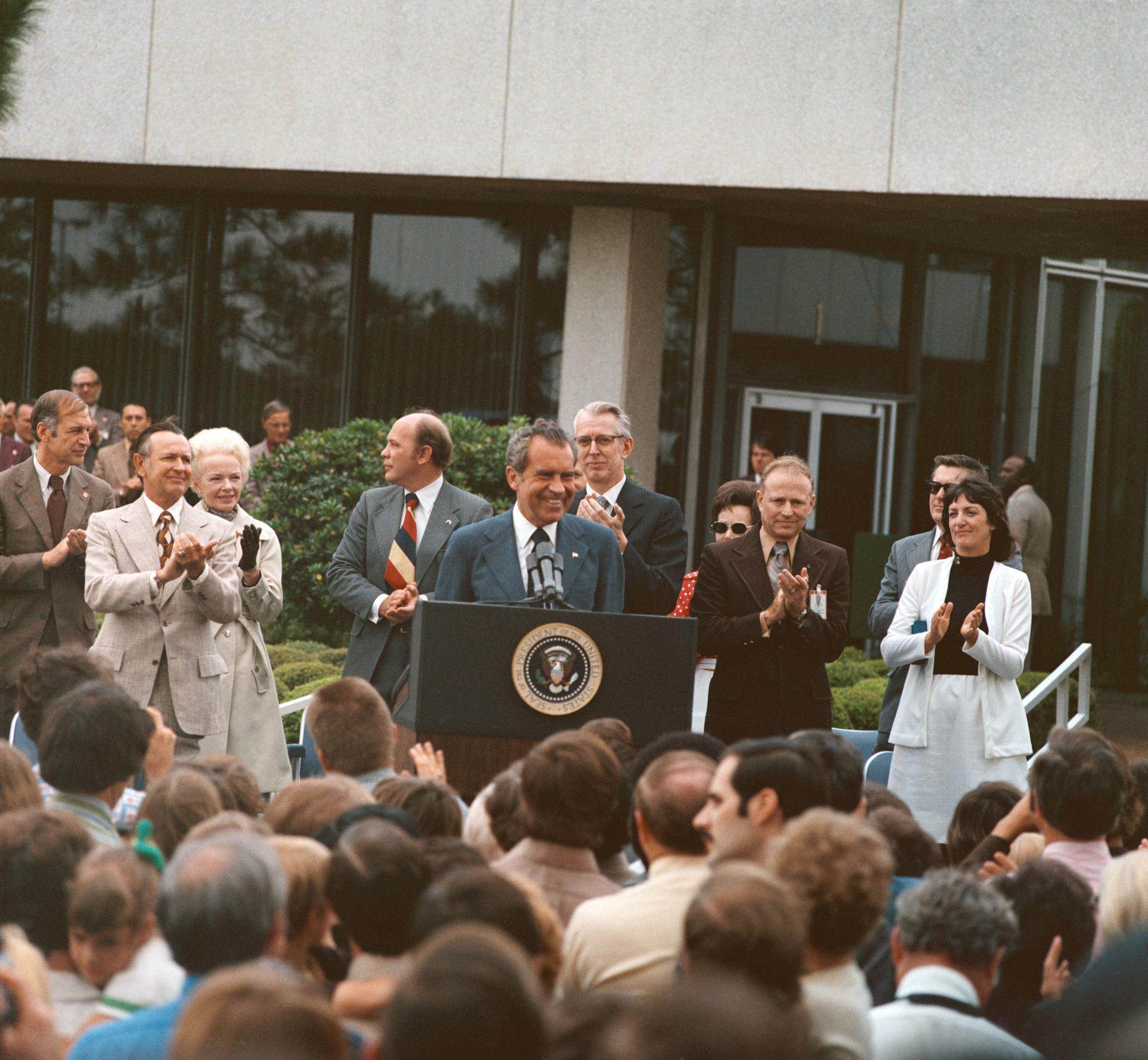
JoAnn Carr: It almost goes without writing that the astronaut wives were among the biggest heroes of early U.S. human spaceflight – and JoAnn Carr, Skylab 4 commander Gerald P. Carr’s wife, was no exception. Many don’t know that JoAnn was instrumental in changing the image of Skylab 4’s crew, who were dogged by press stories concerning workflow issues during the early part of their mission. JoAnn decided to reach out to astronaut chief Deke Slayton, who by then was preparing for his own spaceflight (1975’s Apollo-Soyuz Test Project). From a 2019 NASA Johnson oral history:
I guess I was thought of as difficult because I really called the people out at NASA when I was upset about the way they were being handled in the press. They had an air-to-ground press conference that they didn’t even tell the guys about until a couple days before it happened. I knew that the crew was going to know by the questions that were asked, that they were getting bad press.
I tried to tell Jerry that on our telephone conversations, but he wasn’t getting it. I was telling him, “Tell it like it is. Don’t try to sugarcoat it.” He didn’t get what I was talking about until after the press conference was over, and then they all thought, “What are they saying about us down there?”
That was when I called Deke [Donald K.] Slayton and had him come out to the house to tell him, because he was training for his [Apollo]-Soyuz mission, and he wasn’t really on board too much with what was happening on Skylab. So I called him and had him come to my house because I didn’t want to be seen going to his office. I told him what had been happening. He took it upon himself to go into mission control the next day and tell them they were doing a great job. They had broken this record and that record and gave them a pep talk. They really responded well to that.
I was beside myself because I could see what was going on the ground, and I could see what was going on up there because of our telephone conversations, and it wasn’t meshing very well. I told him when he came back, “Please don’t whitewash this. They need to know. If they’re going to put people up there for long periods of time, they need to know how to work with each other.” It seemed like mission control was always on their back about something. It was a difficult time for me. The first 40 days I guess were really difficult. After they finally said, “We’re going to do this on our own time,” then things got easier. Things got less tense.
Gerald Carr’s crew indeed did it their way, and as a result, they returned the most significant volume of scientific results out of all three Skylab crews. Skylab 4 is now recognized as the most successful increment of all the Skylab crewed missions. This was thanks in part to two fearless members of the Carr family, who insisted upon the truth.
*****
Featured image: “This illustration depicts the Skylab-1 and Skylab-2 mission sequence. The goals of the Skylab were to enrich our scientific knowledge of the Earth, the Sun, the stars, and cosmic space; to study the effects of weightlessness on living organisms, including man; to study the effects of the processing and manufacturing of materials utilizing the absence of gravity; and to conduct Earth resource observations. The Skylab also conducted 19 selected experiments submitted by high school students. Skylab’s three different three-man crews spent up to 84 days in Earth orbit. The Marshall Space Flight Center (MSFC) had responsibility for developing and integrating most of the major components of the Skylab: the Orbital Workshop (OWS), Airlock Module (AM), Multiple Docking Adapter (MDA), Apollo Telescope Mount (ATM), Payload Shroud (PS), and most of the experiments. MSFC was also responsible for providing the Saturn IB launch vehicles for three Apollo spacecraft and crews and a Saturn V launch vehicle for the Skylab.” 1971 NASA MSFC graphic.
Emily Carney is a writer, space enthusiast, and creator of the This Space Available space blog, published since 2010. In January 2019, Emily’s This Space Available blog was incorporated into the National Space Society’s blog. The content of Emily’s blog can be accessed via the This Space Available blog category.
Note: The views expressed in This Space Available are those of the author and should not be considered as representing the positions or views of the National Space Society.

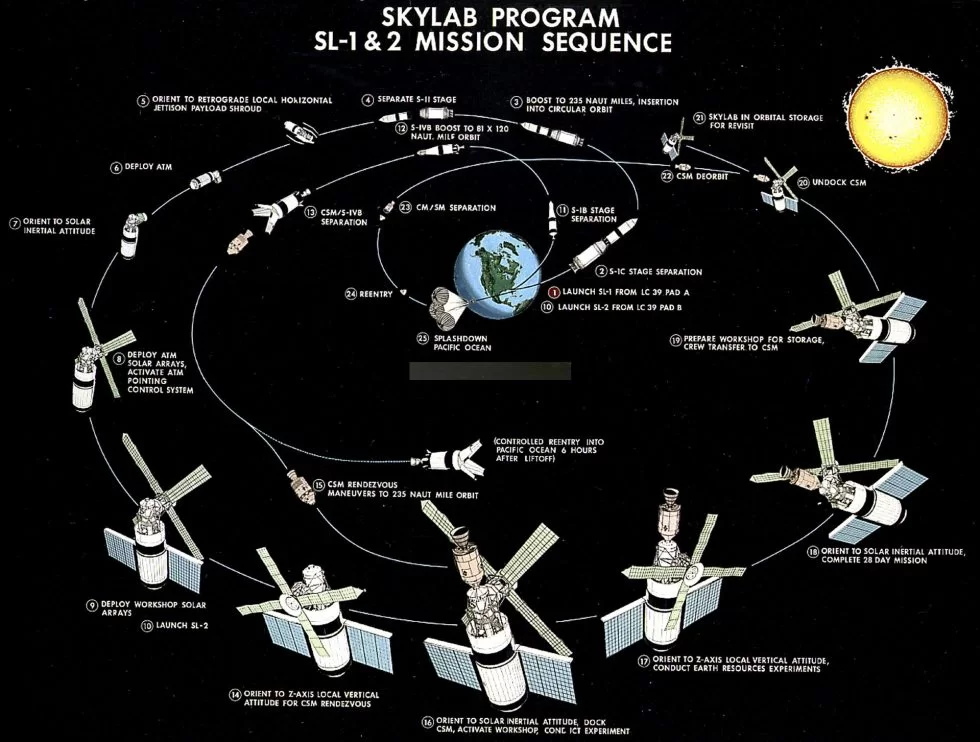


















2 thoughts on “Five for Fifty: Unsung Heroes of Skylab”
Great article. Learned more little details such as Carr’s wife taking care of business.
I’m sorry but you left out Jerry Bostick who tracked that thing going around and around and around and around and around….